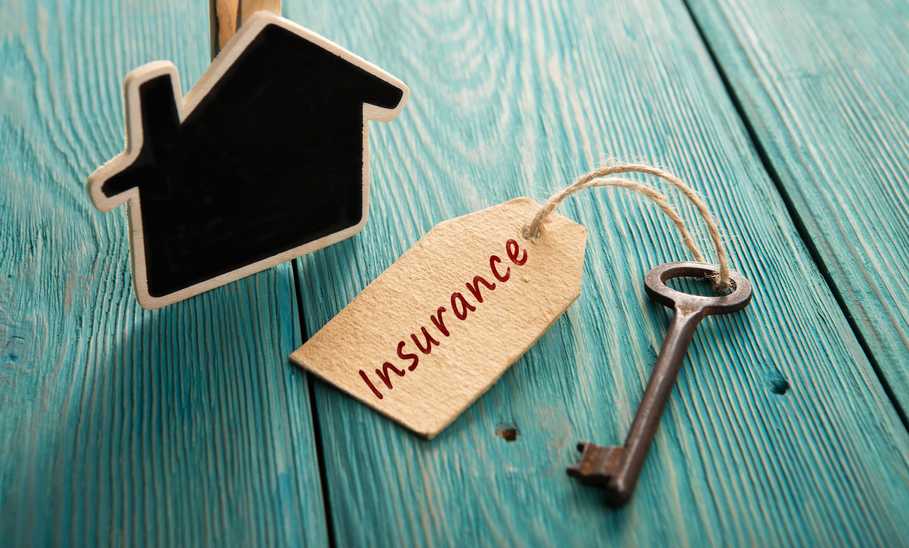What is Private Mortgage Insurance? All You Need To Know

Our evaluations and opinions are not influenced by our advertising relationships, but we may earn a commission from our partners’ links. This content is created by TIME Stamped, under TIME’s direction and produced in accordance with TIME’s editorial guidelines and overseen by TIME’s editorial staff. Learn more about it.
Crunching numbers in preparation for buying a home? You should know about private mortgage insurance (PMI) in case you are required to pay this added fee to your monthly payment.
PMI protects the lender’s finances if you end up defaulting on your mortgage. It’s usually required for a conventional loan if your down payment is below a certain threshold. The lender buys PMI and passes on the cost (premium) to you. You typically pay the premium to the lender as part of your monthly mortgage payment.
The cost of PMI can have a significant effect on your homebuying budget. The good news? You can avoid the PMI requirement altogether, minimize the amount of PMI needed (thus lowering its cost), or get rid of PMI after you’ve built up equity in your home.
When a lender offers a mortgage loan, it assumes some risk. In the best case, the borrower will repay their loan, and the lender will profit from the interest charged. In the worst case, the borrower will stop making payments and default on the loan.
To help mitigate the financial effects of that worst case, a lender will purchase PMI when offering a mortgage to a “riskier” borrower. They’ll require that borrower to pay the PMI premium. When you aren’t putting down what lenders regard as sufficient equity in your home when taking on a mortgage, they put you into that riskier category.
For conventional loans, lenders typically require PMI for borrowers making a down payment of less than 20% of the purchase price. So let’s say you buy a home for $300,000. If your down payment is less than $60,000, your lender will probably require PMI. If you make a down payment of 20% or more, you’ll likely not have to pay for PMI.
When you apply for a mortgage, the lender will let you know if you’re required to pay for PMI. The lender will then buy a PMI policy from a provider of their choice and typically add the premium to your monthly mortgage payment.
So a monthly mortgage payment might look like this:
Principal and Interest: $1,500
PMI premium: $175
Total payment: $1,675
In some cases, the lender may offer you the opportunity to pay for PMI in a lump sum with your closing costs. This obviously increases the amount of your closing costs, but may save you money by lowering the overall cost of the PMI.
The lender may also offer what’s known as lender-paid PMI (LPMI). In this case, the lender covers the cost of PMI but charges you a higher interest rate for your mortgage.
Discuss these options with your lender to determine what makes sense for you financially.
PMI costs vary among insurance providers and fluctuate over time, much like any insurance product. Other factors affecting the cost of PMI are under your control.
Your credit score predicts your likelihood of paying back loans on time. A credit score affects not only your mortgage interest rate but what you pay for PMI.
Scores can range from 300 to 850. A higher score means the lender considers you more likely to repay your loan, which should help lower your PMI cost. You can work toward a higher credit score by paying bills on time and exercising other responsible credit habits.
LTV ratio is an expression of the financial equity you’ve built in your home: It's a ratio comparing your mortgage balance with the property's value. Make a 15% down payment, and your LTV ratio is 85%. Make a 5% down payment, and your LTV ratio is 95%. A higher LTV means you pay more for PMI.
Larger loans with longer terms usually result in costlier PMI. Conversely, smaller loan amounts and shorter loan terms (say, 20 years instead of 30) can bring down the cost of PMI.
Adjustable-rate mortgages (ARMs) typically have higher PMI costs than fixed-rate mortgages. This is because the variable interest rate makes it more difficult to predict the mortgage payment amount. ARMs are thus a slightly riskier proposition for the lender.
While you may not know the exact cost of PMI until you close on your home, you can get an idea using average costs. According to Chase, the annual cost of PMI ranges from 0.22% to 2.25% of the value of your mortgage.
A 2021 report by the Urban Institute shows average PMI costs across various down payment values and credit score ranges. In this table, the numbers in gray represent the annual cost of PMI as a percentage of the mortgage value.
| Down Payment | 620-639 | 640-659 | 660-679 | 680-699 | 700-719 | 720-739 | 740-759 | 760+ |
|---|---|---|---|---|---|---|---|---|
5% | 1.42% | 1.33% | 1.28% | 0.96% | 0.78% | 0.66% | 0.53% | 0.38% |
10% | 0.94% | 0.91% | 0.90% | 0.65% | 0.55% | 0.46% | 0.38% | 0.28% |
15% | 0.44% | 0.40% | 0.38% | 0.28% | 0.25% | 0.23% | 0.20% | 0.19% |
Using this information, we can create a variety of examples.
PMI example 1: If you have a credit score of 620 and make a 5% down payment (resulting in a 95% LTV ratio), the annual PMI cost would be 1.42% of the loan value. For a $300,000 home, that equals $4,047 per year, or $337 per month.
PMI example 2: If you have a credit score of 700 and make a 15% down payment (resulting in an 85% LTV ratio), the annual PMI cost would be .25% of the loan value. For a $300,000 home, that equals $638 per year, or $53 per month.
PMI example 3: If you have a credit score of 720 and make a 10% down payment (resulting in a 90% LTV ratio), the annual PMI cost would be .46% of the loan value. For a $300,000 home, that equals $1,242 per year, or $104 per month.
As you see from the table and these examples, your credit score can significantly affect what you pay for PMI.
Making a 5% down payment on a $300,000 home with a 620 credit score would result in a $337 added to your mortgage payment for PMI. A 760 credit score would lower the monthly cost of PMI to $90. That’s a savings of $247 per month or $2,964 per year!
Considering how much PMI can add to the cost of buying a home, many borrowers look for ways to avoid the requirement.
Perhaps the most obvious way is to make a down payment of at least 20%. This would increase your LTV ratio to 80% and should eliminate the PMI requirement.
If saving that amount of money isn’t feasible, you can consider a piggyback loan. With a piggyback loan, you leverage your home’s equity to borrow additional money for your down payment. Because these loans usually come with higher interest rates than your mortgage, you should ensure the piggyback loan doesn’t cost you more in the long run than PMI. Your lender should help you run the numbers and decide if it makes financial sense.
By law, your lender must automatically remove PMI when your LTV ratio reaches 78%. So over time, as you make your mortgage payments, your LTV ratio will eventually drop to this level. You may be able to request to have PMI removed once your LTV ratio reaches 80% (rather than waiting for the lender to do it when it reaches 78%).
You may be aware that home values have increased rapidly in many areas of the country since 2021. Such inflation can increase your home equity and help lower your LTV ratio. If you think your home’s value has increased to the point where your LTV ratio has dropped below 80%, contact your lender and ask about removing PMI. The lender may require a property appraisal to confirm your home’s value, but this could be a small price to pay for saving up to thousands of dollars annually in PMI payments.
The PMI we’ve covered in this article relates to conventional mortgage loans. If you’re applying for a government-backed mortgage, such as a Federal Housing Administration (FHA) loan, you should know that PMI is handled a bit differently.
All FHA loans require mortgage insurance, regardless of credit score or LTV ratio. You pay for part of this insurance at closing (Up Front Mortgage Insurance Premium), then pay the remainder (a mortgage insurance premium) as part of your monthly payment.
All VA loans are backed by the VA Guarantee. Therefore, you do not have to pay mortgage insurance. However, you do pay a monthly “funding fee” based on your service details, down payment amount, and several other factors. This is meant to help fund the program for future generations.
Similar to FHA, USDA loans don’t require PMI, but they do require mortgage insurance. You pay part of this at closing, with the remainder spread over your monthly payments.
Learn more about mortgage insurance for FHA and other government-backed loans.
Grumbling about the added expense of PMI when buying a home is certainly understandable. But it’s worth considering all that PMI makes possible.
At one time, a prospective homebuyer simply couldn’t get a mortgage without at least a 20% down payment. Lenders weren’t willing to take on riskier borrowers, so those with minimal savings had to find ways to get the money—or they had to wait.
Times have long since changed. Introduced in 1957, PMI makes it possible for people with minimal down payments to buy a home. And armed with a bit of knowledge, you can minimize the effect of PMI on your homebuying budget.
According to the Internal Revenue Service, the itemized deduction for mortgage insurance premiums expired for the 2022 tax year. Always discuss your tax needs with a certified tax preparer.
PMI can easily be confused with homeowners insurance. However, they’re two entirely different things. PMI is purchased by a mortgage lender (with the cost passed on to the borrower) to insure against the default of a loan. Homeowners insurance is purchased and paid for by a homeowner. This form of insurance protects the homeowner (and lienholder) financially if the home is destroyed by fire or severe weather or the homeowner’s personal property is damaged or stolen.
PMI protects your lender if you stop making payments and default on your mortgage. For conventional loans, PMI is typically required of borrowers who make a down payment of less than 20% of the purchase price.
You typically can cancel PMI once you've built 20% equity (or an 80% LTV ratio) in your home. However, you may need to reach out proactively to the lender to have this happen immediately. Lenders must legally remove PMI only when the LTV ratio is 78%.
The lender typically purchases PMI. The borrower does not have the opportunity to shop around for PMI providers, unlike with other types of insurance.
The information presented here is created by TIME Stamped and overseen by TIME editorial staff. To learn more, see our About Us page.



